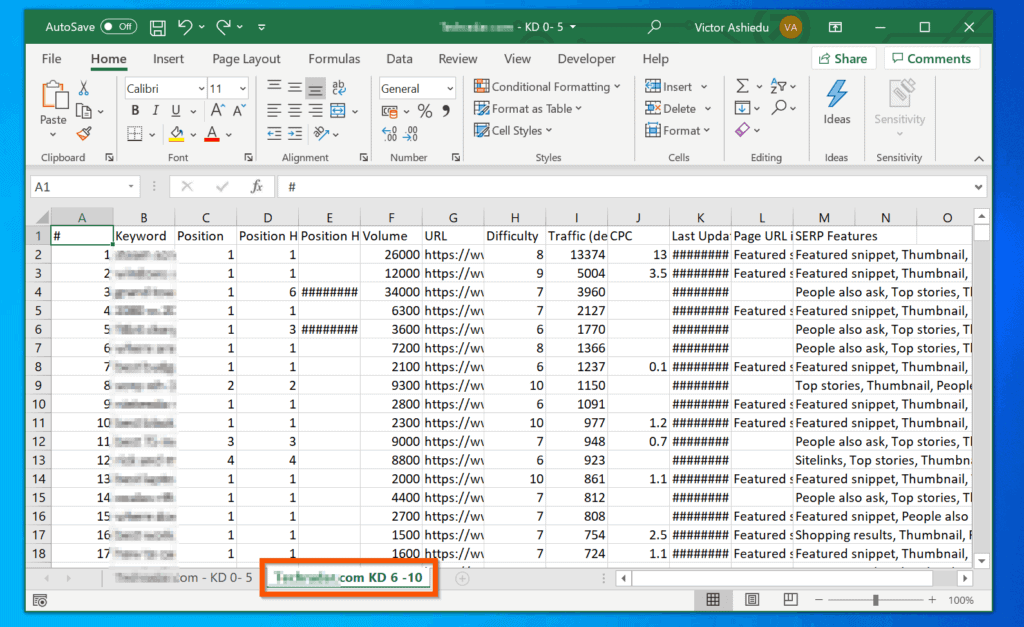3 Ways to Merge Data from Multiple Excel Sheets 2010

Merging data from multiple Excel sheets can be a daunting task, especially if you're dealing with large datasets or complex spreadsheets. Microsoft Excel 2010 offers several methods to consolidate this information, making it easier to analyze and manage your data. In this post, we'll explore three effective ways to merge data from different sheets in Excel 2010, ensuring you can streamline your workflow and enhance productivity.
Method 1: Using Excel’s Consolidate Feature

The Consolidate feature in Excel 2010 is a powerful tool that allows you to combine data from multiple ranges into one. Here’s how to use it:
- Select the Destination Range: Choose where you want the merged data to appear.
- Go to Data Tab: Click on ‘Data’ in the ribbon and then select ‘Consolidate’ from the ‘Data Tools’ group.
- Choose Function: Typically, ‘Sum’ is used, but you can choose other functions like ‘Count’, ‘Average’, etc.
- Specify Ranges:
- Click in the ‘Reference’ box, then select the range of cells from your first sheet to consolidate.
- Use the down arrow next to the ‘Reference’ box to add more ranges from different sheets by repeating this step.
- Link to Source Data: Optionally, check ‘Create links to source data’ for dynamic updates.
- Press OK: Excel will now consolidate the data into your chosen destination.
⚠️ Note: Ensure that the columns in each range match precisely; otherwise, the consolidation might not work correctly.
Method 2: VLOOKUP with Multiple Sheets

If your goal is to lookup and pull data from multiple sheets, VLOOKUP can be your friend:
- Prepare Your Sheets: Ensure each sheet has a common identifier (like an ID or Name) in the first column.
- Write VLOOKUP Formula:
Here’s a breakdown:=VLOOKUP(lookup_value,SheetName!range,column_index_num,FALSE)- lookup_value: The cell containing the data you’re looking up.
- SheetName!range: The table array from which you want to pull data, including the identifier column.
- column_index_num: The column number from which to retrieve the value.
- FALSE: For exact match lookup.
- Apply to Multiple Sheets:
- Use CHOOSE or INDIRECT functions to dynamically reference multiple sheets.
- E.g.,
=VLOOKUP(A2, CHOOSE({1,2}, Sheet1!A:C, Sheet2!A:C), 3, FALSE)
🌟 Note: VLOOKUP’s performance can decrease with large datasets. Use Index Match for larger datasets for better efficiency.
Method 3: Use Power Query

For more advanced users, Excel’s Power Query add-in offers a robust solution for merging data:
- Add Power Query:
- Go to ‘File’ > ‘Options’ > ‘Add-ins’.
- In the ‘Manage’ dropdown at the bottom, choose ‘COM Add-ins’, click ‘Go’.
- Check ‘Microsoft Office Power Query for Excel’ and ‘OK’.
- Import Data:
- From ‘Power Query’ tab, click ‘From Table/Range’ or ‘From File’ to load your data.
- Repeat for each sheet or workbook you want to merge.
- Merge Queries:
- Go to ‘Home’, then ‘Merge Queries’.
- Select the first query, then pick the second query. Ensure the join key is set correctly.
- Finalize and Load:
- Adjust settings like join kind (e.g., Left Outer, Full Outer, etc.) if necessary.
- Click ‘OK’ to merge, then ‘Close & Load’ to add the result to your workbook.
💡 Note: Power Query is particularly useful for recurring tasks or when dealing with complex data structures.
In summary, these three methods provide different approaches to merging data in Excel 2010. The Consolidate function is ideal for simple summation of data, VLOOKUP serves for looking up and merging data based on common identifiers, and Power Query is the tool of choice for advanced data manipulation and recurring tasks. By choosing the right method based on your data size, complexity, and frequency of updates, you can significantly improve your data management in Excel. These techniques not only save time but also help in ensuring data integrity and reducing manual errors.
Can I merge data from different Excel files?

+
Yes, you can merge data from different Excel files using the methods described. For Consolidate and VLOOKUP, you’ll need to open each workbook or establish references to closed workbooks. Power Query can import data from multiple external sources, including other Excel files.
Which method should I use for real-time data updates?

+
If you need real-time data updates, VLOOKUP with external references or using Power Query to load and refresh data automatically would be your best bets. Remember to check ‘Create links to source data’ in Consolidate for dynamic updates as well.
What if my data isn’t structured in the same way across all sheets?

+
Power Query provides the most flexibility here. It can transform data from various structures into a common format before merging. You might need to adjust column headers or use Power Query’s transformation tools to align your data properly.